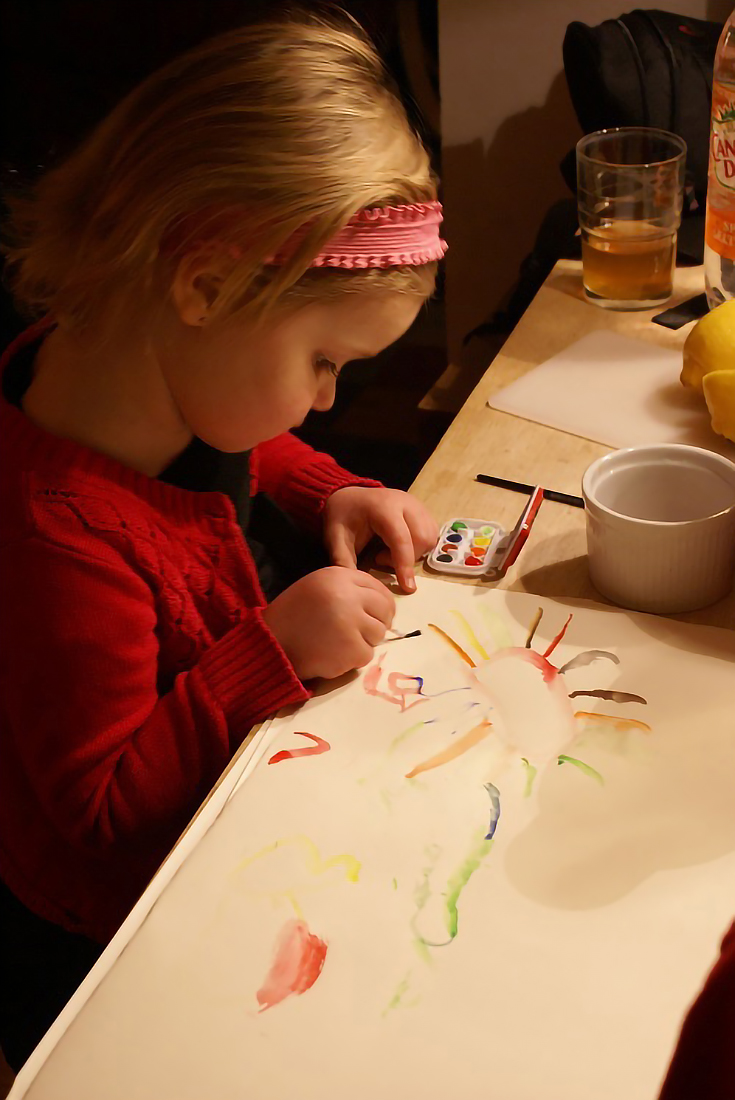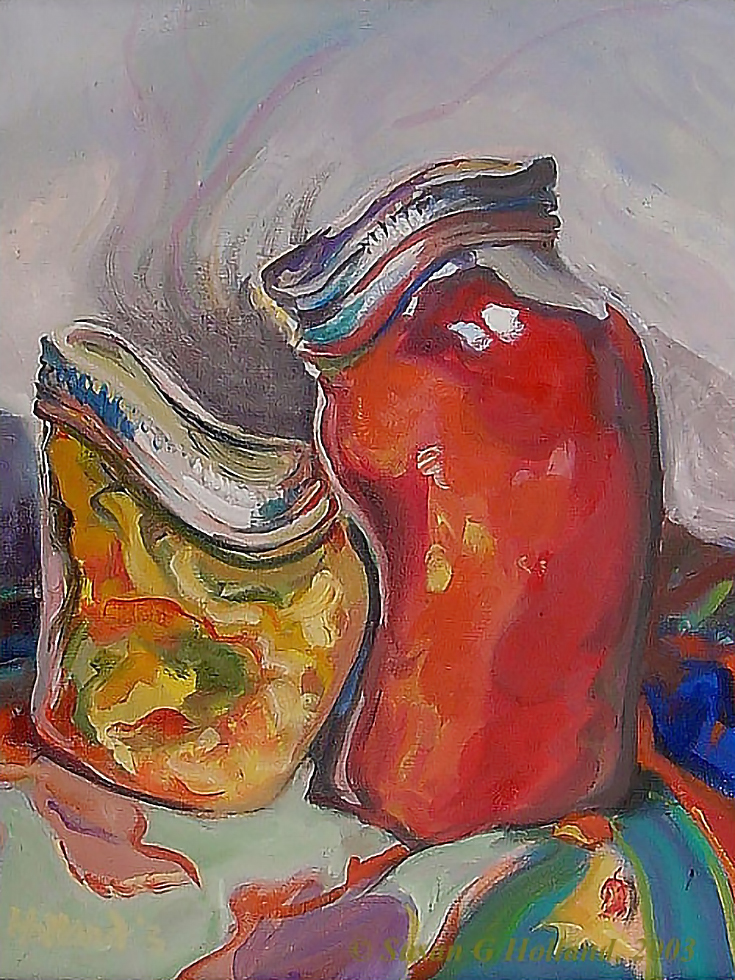“It took me four years to paint like Raphael, but a lifetime to paint like a child.”
-Pablo Picasso, Spanish artist and painter
When Picasso said (after having mastered a thoroughly formal classical art education) that he was now trying to learn how to paint like a child, I think he was referring to the permissions granted to children.
For instance, my daughter, at four, called cucumbers “cumbycues!” Within our family we still call them that, even though she is now pushing fifty. We gave her latitude to call them that, because we liked her version enough to keep it.
In the same way, I believe Picasso was referring to the latitude that all parents give to their children when they are making art (and words.)
Children may make skies magically purple, or give Mommy very big hands because she is always doing things with hands, but they may not think it’s noteworthy that Mommy has a neck or ankles. So they skip the neck and ankles.
It’s permissible for children, so why not adult artists?
Picasso got permission, somehow, from his muse and came up with Cubism. He proclaimed that people really have many sides, not just one, so why not represent them that way on a two-dimensional plane! He and his indulgent muse were enjoying what I call the “what if” factor.
Funny thing is, as children grow they come to a place where they conclude that they are not really good artists. Around eleven or twelve they decide that their artwork is not quite as skillfully done as those they admire, and they make a choice, most of them, to give up and become something else, like a secretary or a doctor.
Usually their parents—concerned with future earning potential—are much more interested in sending them to pre-med than to art school. So from then on, the child says “I’m not artistic” and eventually grows up to become an adult who says, “I can’t even draw a straight line.”
(How many times have you heard that one?)
If children can just be allowed to try something safely non-representational (like ceramics, or wood-craft, or weaving) they may grow wiser and realize that no-one starts off elegantly in art or any other discipline.
But for most mature, world-oriented people, it’s a huge struggle finding their way back to their artistic core, the right brain, even to just TRY the “what if’s.”
If they do, a nanny inside pops up and says “. . . but one doesn’t do it like that!”
Yet truly original art comes from giving oneself permission to try the “what if’s.” Like asking, “What if I made something where everything had a yellow line around it?” (Our inner nanny probably pipes up and says, “Dear, nothing has a yellow line around it.”)
But this nanny persona is NOT our art muse! WE can steer the paintbrush, and we can put yellow lines around anything we want.
The things we try may not be very enchanting to begin with, but we look and look at that yellow line, and wonder, “What if it were blue on the bottom sides and only yellow on the top sides? What if it were narrower and wider? What if it were a jagged line?”
This is how the artistic mind works on things, and eventually it comes up with ways that yellow and blue lines might go nicely.
When spectators see that unique artistic expression, they’ll look on and wonder. Some of them may even dare to let their minds wrap around the idea, and grow, and are enriched. That is art at its best.
(Sidenote: If you are computer savvy you can find some very interesting “what if’s” by playing with your ideas in an image editing program before painting them. In case you believe this is “cheating,” I would ask if squinting your eyes is cheating, or if looking at an image in a mirror is cheating. I say it’s another “what if.”)
When I’m not painting, I often take odd photos of things that have nice texture, or interesting composition to use as references later. I had a tomato garden in New Jersey, and when tomatoes ripen in New Jersey, there is absolutely no possibility of painting. The weather hovers around 100 F, the humidity sits at about 99%. My days were spent steaming tomatoes outside to keep the steam out of the house.
In 2003, when the cooler days of October came, I found myself painting lovely glass jars with glowing red contents along with some pickles and peppers, and I found myself remembering the melting heat of canning season and wondering, “What if I melted these jars in the painting?”
From that idea evolved some wizardry with Photoshop that produced a digital photograph I used to make the painting below, entitled Canning Like Crazy.
This oil painting was popular enough that giclee prints are planned, and it’s all because of a single “what if.”
There’s really no reason not to go for it. Come up with an idea, and then allow yourself to paint it, even if it’s something that people have never seen the likes of before. Let the “what if’s” begin!
This post may contain affiliate links.


